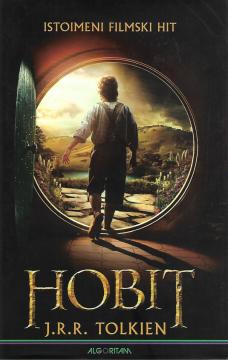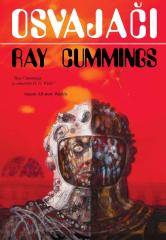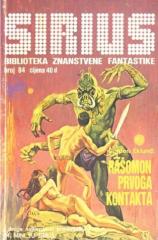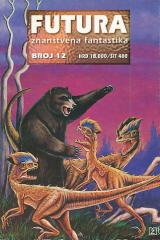
Hobit ili Tamo pa opet natrag
Der Hobbit wurde mehrfach verfilmt (1977, 1985 und in drei Fortsetzungen 2012, 13 und 14), auch Computerspiele entstanden nach der Vorlage.
Der Hobbit ist J. R. R. Tolkiens erstes Buch, das als Fantasy-Roman für Kinder und Erwachsene konzipiert ist. Die Erstveröffentlichung erfolgte am 21. September 1937. Obwohl er als Kinderroman konzipiert war, erfreute er sich auch bei Erwachsenen großer Beliebtheit. Er nannte die Geschichte „There and Back Again“ und folgt den Abenteuern des Hobbits Bilbo Beutlin und seiner Gefährten. Als die Geschichte große Popularität erlangte, verlangte das Publikum mehr und das Buch „Der Herr der Ringe“ wurde veröffentlicht.
Die Handlung beginnt, als der Zauberer Gandalf und 13 Zwerge in das Haus von Bilbo Beutlin einbrechen: Thorin Oakenshield, Óin, Glóin (sein Sohn Gimli ist eine der Hauptfiguren in „Der Herr der Ringe“), Dwalin, Balin (er war Gimlis Cousin, der regiert in Khazad-Dum), Bifur, Bofur, der dicke Bombur, die Brüder Fíli und Kíli, Dori, Nori und Ori). Sie überreden Bilbo, mit ihnen auf eine Reise zu gehen, und schon bald machen sie sich auf den Weg. Bald wird die Gruppe von drei Trollen gefangen genommen, doch die Trolle schaffen es nicht, sich vor der Sonne zu verstecken und sind wie versteinert. Die Familie nimmt Teile ihres Schatzes und geht nach Bruchtal. Von dort aus machen sie sich auf den Weg zum Berg Erebor, um den Drachen Smaug zu töten. Nachdem sie Bruchtal verlassen hatten, wurden sie von Goblins gefangen genommen, konnten aber fliehen. Während seiner Flucht verirrt sich Bilbo und findet im Dunkeln den Einen Ring. Mit Hilfe der Adler gelingt es ihnen, das Nebelgebirge zu überqueren und zum Haus von Beorn zu gelangen. Danach begeben sie sich in die Unterwelt, wo sie vom König der Unterweltelfen, Thranduil, gefangen genommen werden. Doch es gelingt ihnen erneut, in Weinfässern zu entkommen und Jezergrad zu erreichen. Sie füllen ihre Vorräte in Jezergrad auf und machen sich auf den Weg zum Berg. Bilbo gelingt es, den goldenen Pokal zu stehlen, und Smaug greift Jezergrad aus Rache an. Dort gelingt es dem Barden aus Down, den Drachen zu töten. Die Gruppe bleibt im Berg eingeschlossen und die Armeen aus Menschen aus Jezergrad, Elfen aus Mrkodol und Zwergen aus dem Eisengebirge machen sich auf den Weg, um den Schatz einzusammeln. Die Armeen bereiten sich auf einen Angriff vor, doch dann werden sie von Goblins aus dem Nebelgebirge angegriffen und sie vereinigen sich, und die Adler schließen sich später der Schlacht an. Bei schweren Verlusten gewinnt die Anti-Goblin-Armee und teilt den Schatz gleichmäßig auf. Diese Schlacht wird auch die Schlacht der fünf Heere genannt.
Im Angebot sind keine Exemplare vorhanden
Das letzte Exemplar wurde kürzlich verkauft.





